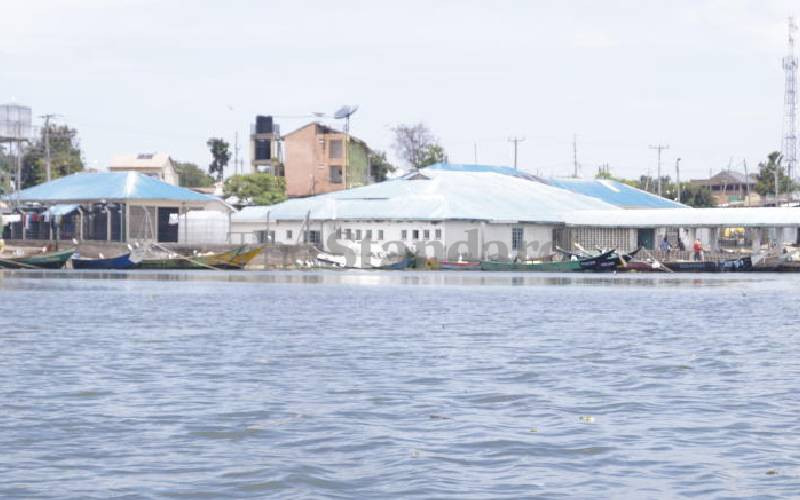Sometime in 2011 the government rolled out the Economic Stimulus Programme seeking to restore Kenya’s economy in the aftermath of the post-election violence. At that time, many farmers in Sagana, Kirinyaga County ventured into fish farming.
For the first time, farmers who didn’t have prior knowledge in rearing fish tried their hand in the venture after they were trained in hatchery management. They were also supplied with fish ponds in a project that sought to construct at least 200 farming ponds in 140 constituencies across the country. The ponds were then stocked with fingerlings which would be ready for harvesting six months later. But according to Neema Nyanchama, a farmer in Sagana, the project had unforeseen appalling outcomes.
“Everyone harvested the fish at the same time and the market was flooded with the commodity. There was a lot of wastage and farmers were frustrated with the little money they made out of the fish,” says Ms Nyanchama.
She says the fact that fish had never been widely consumed in Kirinyaga and many parts of Central, further compounded the misery of fish farmers who had few people buying their produce.
“Many people in the interior parts of Kirinyaga had never eaten fish before. They didn’t know how to remove bones from it and how to prepare it. Others did not like its smell,” she says.
In those days, Ms Nyanchama bought large quantities of fish from farmers at Sh250 a kilo which she sold at Sh400. She endured the raw end of the deal when the fish failed to find market among residents. She would later start selling fish in ways that were more appealing to the locals.
“I started removing bones from the fish and making fish balls which were easier to eat as people did not have to worry about getting injured by the bones anymore,” she says, adding that she later expanded fish value addition to making all kinds of snacks.
In no time, demand for the fish sausages, fish fillets, fish samosas and other fish snacks that Ms Nyanchama made was increasing among locals who visited the vibrant industrial town and the expansive demo farms around the town.
“When school children visited Sagana, they bought a lot of fish snacks. They enjoyed eating snacks more than they ate fish as a whole,” she says.
And now, even though fish consumption in Sagana has increased, locals are still scared of eating its head. Nyanchama says she has also started making fish soup from this dreaded part of the fish. This way, she says, consumption of fish soup is slowly replacing beef soup among many people who are increasingly liking fish for its high nutrient value.
Fish consumption is essential for growth and development especially in young children for its unparalleled richness in Omega-3 fatty acids. In fact, it is usually recommended for pregnant women and breastfeeding mothers who take some amounts of omega-3 fatty acids. This is besides its richness in high-quality protein, iodine and various vitamins and minerals.
But according to Nyanchama, it isn’t just the nutritional value that makes fish an increasingly coveted farming venture. She says fish farming is increasingly becoming lucrative, especially to those farmers who beef it up with value addition.
A kilo of fish costing Sh400, for instance, when minced produces up to 200 meatballs sold at Sh20 each. This fetches the farmer Sh4, 000. Samosas fetch an even juicier offer as a kilo of fish can be made into 90 samosas each sold at Sh50, translating to a Sh4, 000 on just a kilo of fish. Besides, value added, fish products have a longer shelf life as compared to selling fish in their natural form.
And now, farmers eager to tap into the lucrative venture are moving away from the traditional fish ponds and have started to embrace aquaponics, which is a combination of fish farming and soilless plant production. Aquaponics presents an integrated farming system where waste from fish is used as fertiliser for plants and plants in turn purify the water by removing the nutrients and increasing oxygen concentration in the water that is allowed to flow again to the fish.
Fish release their waste in form of ammonia which if left to concentrate in an enclosed environment for long, it causes suffocation of the fish. The fish also need optimum concentrations of dissolved oxygen to stay alive.
Stay informed. Subscribe to our newsletter
In one aquaponics demo at Jomo Kenyatta University of Agriculture and Technology (JKUAT) for instance, the fish farm includes three tanks. There is a fish tank where fish are reared, a grow tank where crops are grown and a sump tank where purified water from the grow tank is collected for re-circulation. Water with fish droppings from the fish tank is sucked through simple capillary action and is led through a pipe to the grow tank. In the grow tank, there is a special kind of porous gravel on which plants grow.
Dr Shadrack Muya, a lead researcher in the project dubbed ‘Aquaponics and Value Addition on Fish Products’ explains that the gravel allows water to flow freely for circulation.
“Normal soil clogs and does not allow water to flow freely. This porous gravel filters out fish droppings because the essence of aquaponics is to allow water to flow freely from the fish to the crops and back to the fish again in a continuous process,” says Dr Muya.
He explains that important bacteria is attached on the porous gravel and continuously breaks down the ammonia in fish droppings into important nitrates that are absorbed by the crops in the grow tank that supports soilless farming. High value crops such as coriander and vegetables are preferred for aquaponics.
Finally, there is an automated syphon in the grow tank that allows water that is free of ammonia and full of dissolved oxygen to flow out from the grow tank to the sump tank and back to the fish tank.
Aquaponics has been hailed for its economy in space that allows farmers to stock a larger quantity of fish in a limited area as compared to open fish ponds. While a 1000-litre tank for instance can hold 500 fish which are continuously supplied with fresh water, each fish in an open fish pond requires 1m2 to grow to maturity. This is because the fish are not supplied with fresh water every time. A 1000-litre tank is just roughly 2m2.
 The Standard Group Plc is a
multi-media organization with investments in media platforms spanning newspaper
print operations, television, radio broadcasting, digital and online services. The
Standard Group is recognized as a leading multi-media house in Kenya with a key
influence in matters of national and international interest.
The Standard Group Plc is a
multi-media organization with investments in media platforms spanning newspaper
print operations, television, radio broadcasting, digital and online services. The
Standard Group is recognized as a leading multi-media house in Kenya with a key
influence in matters of national and international interest.
 The Standard Group Plc is a
multi-media organization with investments in media platforms spanning newspaper
print operations, television, radio broadcasting, digital and online services. The
Standard Group is recognized as a leading multi-media house in Kenya with a key
influence in matters of national and international interest.
The Standard Group Plc is a
multi-media organization with investments in media platforms spanning newspaper
print operations, television, radio broadcasting, digital and online services. The
Standard Group is recognized as a leading multi-media house in Kenya with a key
influence in matters of national and international interest.








